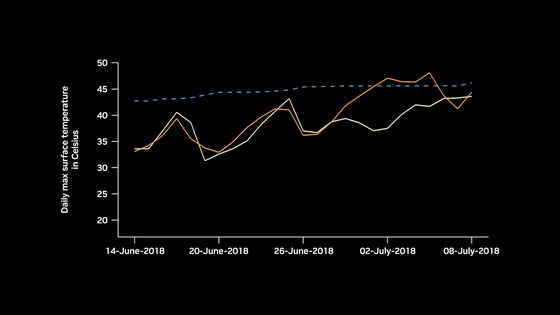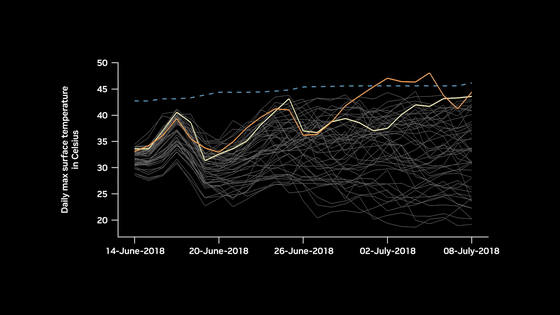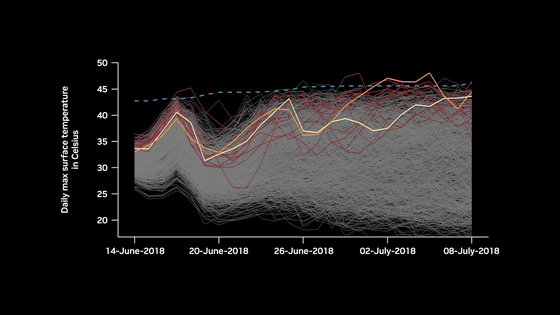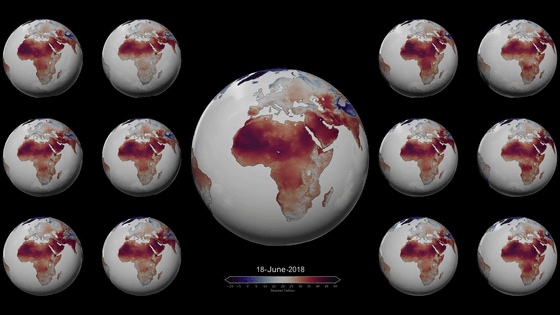NVIDIA CEO Jensen Huang mentions that AI and high-speed computing will help breakthrough in climate research

NVIDIA CEO Jensen Huang delivered a keynote speech at the Berlin Summit of
AI, Digital Twins to Unleash Wave of Climate Research Innovation | NVIDIA Blog
https://blogs.nvidia.com/blog/2023/07/03/climate-research-next-wave/

As extreme weather is becoming commonplace, humankind has an urgent need to take measures to combat climate change. However, it will take decades for efforts to combat climate change to bear fruit. It is very difficult to work without knowing the result.
In order to formulate the best mitigation and adaptation strategies, NVIDIA created a climate model that can predict the world's climate several decades into the future, and developed an AI supercomputer 'Earth-2' that specializes in climate change prediction. , has announced that it will build a digital twin of the Earth in
NVIDIA builds supercomputer 'Earth-2' to predict the future of mankind | NVIDIA
https://blogs.nvidia.co.jp/2021/11/18/earth-2-supercomputer/
In this keynote speech, CEO Huang outlined the three 'miracle' researchers need to achieve breakthroughs in climate research.
The first necessary miracle is to simulate it fast enough and with a precision of a few square kilometers.
The second miracle required is the ability to precompute vast amounts of data.
Finally, we need to use Omniverse to interactively visualize all the data and put it in the hands of policy makers, industries, companies and researchers.
Huang says AI and high-speed computing will help make these miracles a reality.
EVE is an international collaboration that integrates digital infrastructure focused on climate science, high-performance computing (HPC) and AI to create the world's first, easily accessible We aim to provide climate information in units of km.
The EVE initiative promises to accelerate the pace of evolution by advocating climate prediction at a resolution of 2.5 km. Behind this is the accumulation of the past 25 years.
In the keynote speech, Huang also showed how the global data-driven weather forecast model FourCastNet was able to accurately predict the course of Hurricane Barbie by modeling the Coriolis force. Such a model seems to be able to make more detailed long-term predictions by connecting it to regular 'checkpoints' created in conventional simulations.
A demonstration video also showed how FourCastNet predicted an unprecedented heat wave in North Africa.
Predicting Extreme Weather Risk Three Weeks in Advance With FourCastNet-YouTube
In 2018, a record heat wave of 51.3 degrees hit Algeria in North Africa. The heatwave was the hottest on record in Africa and exceeded the predictions of existing climate models.

The dashed line shows

In addition, a thin gray line shows FourCastNet's 50-member ensemble information. This is a typical size for a climate model

However, by running FourCastNet on NVIDIA GPUs, we were able to achieve a 1000-member ensemble in 1/10th of the time while consuming less energy. Twelve of the ensembles indicated by red lines exceeded the 99th percentile and correctly predicted heat waves.

This is a map showing the heat waves predicted by the 12 ensembles. Using AI, it was possible to predict heat waves three weeks in advance.

Huang showed that increasing the size of the ensemble with GPU acceleration can give us a deeper understanding of extreme weather around the world and buy us valuable time to prepare.
Related Posts:







